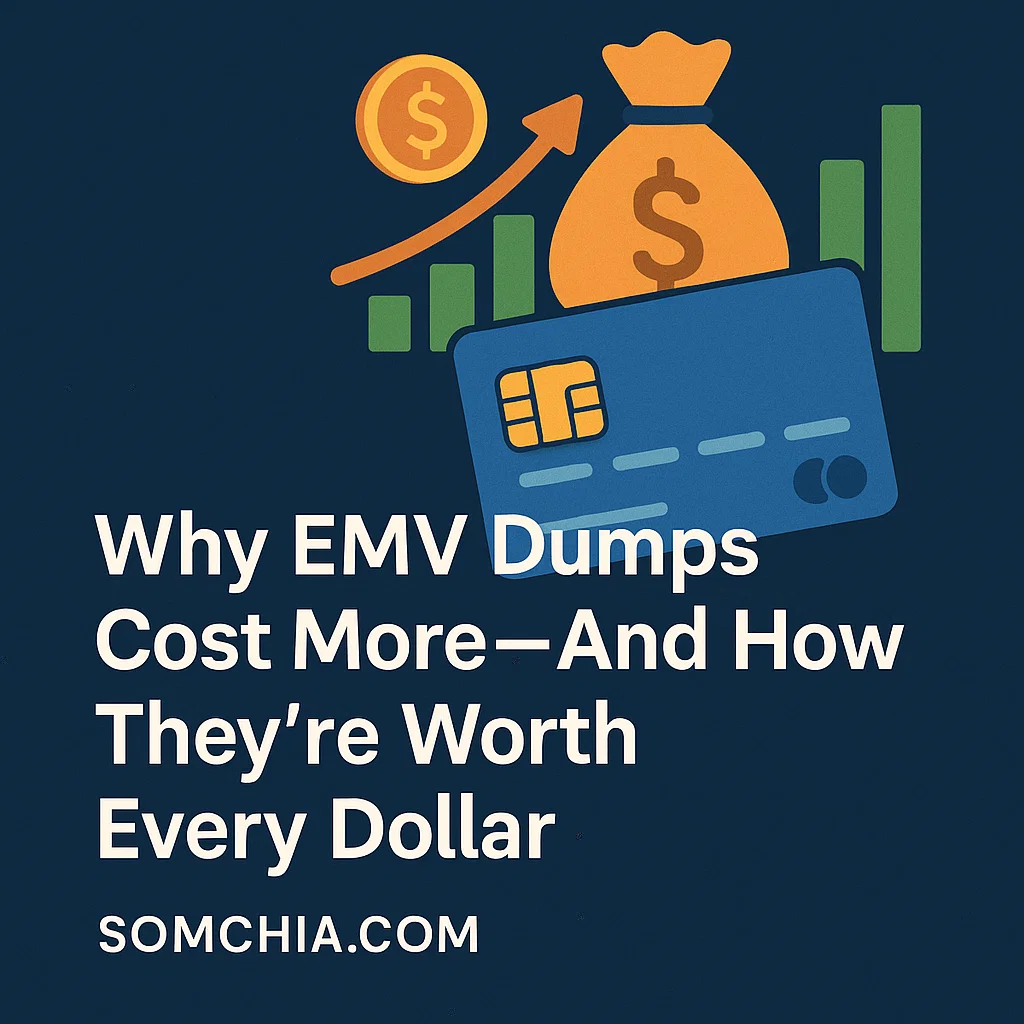In the underground economy of credit card fraud, there’s a clear price hierarchy—and at the top sit EMV dumps. While traditional magstripe card dumps and CVVs still hold value, EMV chip dumps consistently command the highest prices. But what makes them so expensive? More importantly, why are they worth every dollar to professional carders?
Let’s break it down.
What Are EMV Dumps?
EMV dumps refer to cloned data from chip-enabled credit cards, usually extracted via skimmers, point-of-sale (POS) malware, or ATM shimmers. EMV stands for Europay, Mastercard, and Visa—a global standard for chip-based cards that offer enhanced security compared to older magnetic stripe technology.
Instead of just swiping a card, EMV transactions involve dynamic authentication—meaning every transaction is unique and harder to clone.
✅ Related Reading: How EMV Works
Why EMV Dumps Cost More
1. Harder to Clone
EMV data is more encrypted, requiring advanced hardware and technical skill to extract. Unlike magstripe data—which can be skimmed using cheap DIY setups—EMV chips demand:
-
Specialized skimming hardware (like deep insert shimmers)
-
Access to infected POS terminals or gas pumps
-
Real-time cloning and PIN capture tools
Tools like the MSR X6, OmniKey, or ACR38 are often used to work with chip-based dumps—but success still depends on the quality of the dump and if it includes PIN data.
2. Higher Success Rate
EMV dumps have a much higher approval rate at the point of sale (POS), especially in chip-and-pin regions like Europe or Canada. That makes them incredibly valuable for:
-
In-store fraud
-
Luxury goods reselling
-
Cashout operations via ATMs or kiosks
3. Include PINs (Sometimes)
The holy grail is a dump with PIN. These allow fraudsters to withdraw cash directly or make high-value purchases without getting flagged.
A dump + PIN can cost up to 10x more than a regular CVV2 set.
⚖️ Cost Breakdown: EMV Dumps vs. Other Carding Data
| Data Type | Avg Price (2025) | Risk Level | Success Rate |
|---|---|---|---|
| CVV2 + Fullz | $5–$20 | Medium | Low to Medium |
| Magstripe Dump | $20–$50 | High | Medium |
| EMV Dump (No PIN) | $100–$250 | Low | High |
| EMV Dump + PIN | $250–$800+ | Very Low | Very High |
⚠️ Prices vary depending on BIN, geolocation, limit, and bank reputation.
Why Carders Prefer EMV Dumps (Despite the Price)
-
Lower Detection – Chip transactions are harder for banks to flag as fraudulent, especially when cloned correctly.
-
Better Return on Investment – Even if a single EMV dump costs $500, a single cashout can bring in $2,000+ in merchandise or ATM withdrawals.
-
More Versatile – EMV dumps are usable worldwide, especially in EMV-mandated countries.
-
Reduced Need for Drop Services – Because of the higher legitimacy of chip-based transactions, many carders can self-cashout without intermediaries.
Where EMV Dumps Are Sold
While it’s not legal or ethical to engage in carding, research shows that EMV dumps are typically found on darknet markets and private Telegram groups.
Top-tier carding forums often trade in:
-
EMV dumps
-
Dumps with PIN
-
Live BIN-checked fullz
Tip: Carders often search using operators like inurl:fullz, or use CVV-specific shops such as CVVShop (mirror) and Fe-acc18.ru (TOR).
Note: These sites are illegal and monitored. This post is for educational and research purposes only.
EMV Dumps and the Future of Carding
As banks upgrade fraud detection, carders are shifting toward higher-quality data that can bypass those systems. EMV dumps offer:
-
Authenticity
-
Longer usability windows
-
High cashout potential
Expect future markets to prioritize EMV dumps, biometric exploits, and device spoofing.
Final Thoughts: Are EMV Dumps Worth It?
For anyone involved in the dark web’s credit fraud ecosystem, the answer is yes—EMV dumps are worth every dollar. They’re harder to get, pricier to use, but offer massive ROI, stealth, and access to high-value targets.
But they also represent the evolution of fraud. As cards get smarter, so do fraudsters. The cat-and-mouse game between security systems and cybercriminals continues—but for now, EMV is still the king of the underground.




